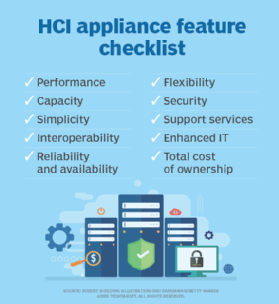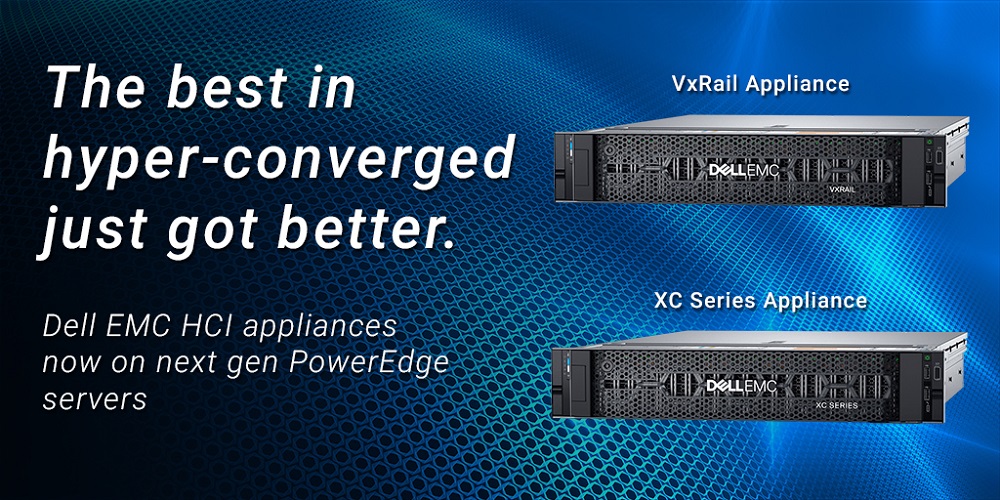About Me
What is Hyperconverged Infrastructure (HCI)?
HCI minimizes the number of systems to be handled, the time invested in developing and developing IT systems and releasing a large number of applications, while reducing the complexity of integrating various diverse resources. HCI integrates commodity data center server hardware with locally attached storage (often flash) that is powered by a dispersed software layer, which disperses all operating functions throughout a cluster (several nodes) for remarkable performance and durability.
Virtualization software application abstracts and swimming pools the underlying resources of the node. To enhance performance, the software dynamically assigns resources to applications running within virtual machines (VMs) or containers. By utilizing a native hypervisor on the node or cluster, the underlying storage is architected and embedded straight within the hypervisor, eliminating the requirement for ineffective storage protocols, file systems and virtual storage home appliances (VSAs).
The current generations of x86 servers offer broad compatibility to support a broad range of software development requires while their reliability and scalability (in part due to high-performance network, computing and storage abilities) make them perfect for application hosting. HCI is designed to fix obstacles brought about by a conventional 3-tiered architecture (3-tiered architecture is the use of independent servers, storage and networking components).
Standard architecture layers require their own management systems, private assistance services, trainings and certifications. Compatibility between vendors is a constant obstacle. For instance, organizations must guarantee that supplier X's most current upgrade works with vendor Y's and so on. HCI assists services to: Quickly manage heterogenous workloads on a single cluster.
 What is Hyperconverged Infrastructure? HCI Monitoring Software – ManageEngine OpManager
What is Hyperconverged Infrastructure? HCI Monitoring Software – ManageEngine OpManager
What is Hyperconverged Infrastructure?
.
Dynamically adjust to altering resource requirements. Autonomously keep an eye on quality of service, thus speeding resolution of issues that may arise. Rapidly scale computing and storage by adding more nodes to existing clusters, without application or services downtime. Develop policy-based management that enables admins to specify storage needs for a provided work.
What is Hyperconverged Infrastructure (HCI)?
Control expenses: Dynamic resource allowance enhances physical and expert resources to decrease expenses while fulfilling growing organizational need and the SLAs around IT services. HCI assists manage capital expenditures and repeating expenditures. HCI utilizes industry-standard components (e. g., x86 servers, 10GB ethernet, etc) rather than purpose-built storage arrays and fiber channel networking to drive expense effectiveness starting at procurement.
Hyperconverged facilities leverages automation to deliver operational efficiencies. Software enables rapid deployment of cloud infrastructure, gets rid of manual jobs like provisioning and handling storage and automates procedures like patching, upgrading and upgrading infrastructure. Many HCI vendors provide perpetual licensing that executes numerous infrastructure refreshes and keeps assistance at a fixed cost.
Consistent facilities operations are important to running and handling applications in between environments. HCI delivers a singular model for infrastructure operations by providing dynamic capability, combining on-premises infrastructure and providing the capability to establish and test new applications. Taking a typical method types consistency and simplicity making it possible for rapid release of new VMs, https://www.infokavach.com/community/profile/irmafrencham880/ containers and next-generation appliances.
A few of the benefits of HCI are: Increased IT performance: Computing, storage and networking resources are hosted in a single location, which means less systems and vendors to handle. Automation in HCI gets rid of manual processes, which increases performance and conserves IT time. Lowered storage and costs: HCI permits services to prevent big in advance expenses by utilizing industry-standard x86 servers and scaling the information center capacity as required.
Streamlined implementation: HCI options are offered in optimized, pre-defined plans, so businesses can simply acquire and run them. HCI permits central management of all virtual environments through a single interface, which simplifies system management. Increased efficiency: With HCI, companies can release several applications and Hyper Converged Infrastructure - HCI Solutions work without stressing over reduced performance.
Hyperconverged infrastructure will evolve into cloud building
Improved flexibility and scalability: Converged and Hyperconverged Solutions HCI uses a building-block approach that enables services to quickly scale by merely including systems according to their service requirements. Advanced security: Hyperconvergence software application is constructed to prepare for and handle hardware failure to boost data defense. Lots of HCI suppliers utilize AES-256 software application file encryption, self-encrypting drives (SEDs) and integrated essential management functions to get rid of the requirement for third-party software, representatives or scripting.
A snapshot saves point-in-time virtual copy of virtual maker (VM) information consisting of the VM's power state, disk, memory, virtual network interface cards (virtual NICs/v, NICs) and files. Pictures are frequently utilized as a failsafe rollback point prior to carrying out system upgrades, altering installed software or installing/uninstalling other parts. They are beneficial for advancement functions, given that they can be used consistently in a "rinse and repeat" style during advancement and software application validation cycles.
Best practices from one of the largest hypervisor companies in the market, https://Dozycia.pl/forum/profile/utemarriott1985/ VMware, plainly explains the intent and function of photos and they are not planned as backups. Some of the restrictions consist of: VMware encourages not to go beyond a maximum of 32 photos in a chain. For finest performance, they suggest 2-3.
Photo files' size increases the longer the snapshot is kept. This effects system performance and may cause storage locations to lack space more rapidly. Alternatively, backup files are created independently of the virtual maker. While most contemporary backup innovations take advantage of the VM snapshot to copy information, they do not rely on the snapshot remaining in place.
 Hyperconverged Infrastructure: A Definitive Guide DataCore
Hyperconverged Infrastructure: A Definitive Guide DataCoreBackups are easily exported and stored on secondary media or reproduced to a secondary target to be kept in a warm state, readily available for healing. Backups are a crucial part of business connection, enabling healing time objectives (RTOs) and healing point goals (RPOs) to be fulfilled. Snapshots do not ensure either of those goals.
Hyperconverged Infrastructure Software Reviews 2022
 VxRail Hyperconverged infrastructure Appliance With Dell VSAN Egypt
VxRail Hyperconverged infrastructure Appliance With Dell VSAN EgyptUnitrends provides advanced recovery functions that go far beyond the capabilities of snapshots, including granular product healing, immediate healing for Oscaracoles.com VMs and Windows servers, automated application-level healing testing and more. Incorporate with Unitrends Cloud for affordable long-term retention and Disaster Recovery-as-a-Service (DRaa, S) to spin up essential work in the occasion of a site-wide catastrophe.
A hyperconverged facilities (HCI) solution is a main tool for linking, handling and running interconnected enterprise systems in a hyperconverged infrastructure (HCI). The innovation helps companies virtualize storage, servers, and networks. While converged facilities utilizes hardware to attain this goal, HCI takes a software-centric method. To be sure, hyperconvergence has its pros and https://love2earth.org/forum/profile/alphonsogwynne cons.
By virtualizing parts it's possible to develop more effective databases, storage systems, server frameworks and more. HCI solutions increasingly extend from the data center to the edge. Lots of likewise incorporate synthetic intelligence and device learning to constantly enhance, adjust and get used to fast-changing business conditions. Some likewise consist of self-healing functions.
This can result in a lower total cost of ownership (TCO). Generally, HCI environments use a hypervisor, usually working on a server that utilizes direct-attached storage (DAS), to develop a data center pool of systems and resources. Most support heterogenous hardware and software systems. The end outcome is a more flexible, agile and scalable computing framework that makes it simpler to build and manage private cloud, public clouds and hybrid clouds.
These include: Organizations have greatly various requirements when it concerns linking existing infrastructure, clouds and edge services. For circumstances, an organization might need just the storage layer in the cloud. Or it might desire to duplicate or transform setups when changing cloud suppliers. Preferably, an HCI service allows a business to alter, update and adjust as facilities needs change.
Location
Occupation
Our newest member: danlazenby1834 Recent Posts Unread Posts Tags
Forum Icons: Forum contains no unread posts Forum contains unread posts
Topic Icons: Not Replied Replied Active Hot Sticky Unapproved Solved Private Closed


